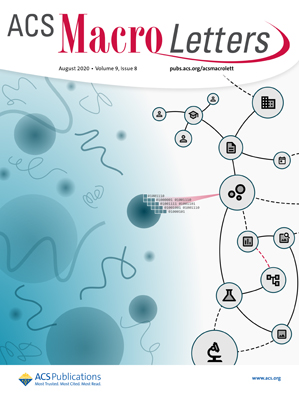HAT化学修饰聚合物链及其在接枝共聚物合成中的应用
IF 5.2
Q1 POLYMER SCIENCE
引用次数: 0
摘要
氢原子转移(HAT)化学已成为选择性分子功能化的有力工具,在制药和农业工业中有着重要的应用。最近,HAT已经在聚合物化学中被探索作为一种通用策略,用于在聚合物链上引入目标官能团,从而能够精确控制诸如溶解度和机械强度等特性。本研究研究了利用HAT在双(十二烷基磺酰基硫代羰基)二硫化物或双(3,5-二甲基- 1h -吡唑-1-基硫代羰基)二硫化物存在下,通过修饰各种底物,包括甲苯、乙酸乙酯和二恶烷,合成可逆加成-破碎链转移(RAFT)剂(或链转移剂,cta)。所得到的cta在热聚合和光诱导电子转移(PET)-RAFT聚合中用于各种单体的可控聚合。然后将该方法扩展到聚己内酯(PCL)和聚醋酸乙烯酯(PVAc)的功能化,从而可以合成与各种乙烯基单体的接枝共聚物。为了促进HAT的发展,研究了包括氯化铁(FeCl3)在内的一系列光催化剂,这些光催化剂具有优于传统热HAT系统的优点。光催化能够在光照射下产生温和而高效的自由基,为昂贵或有毒的金属催化剂提供了经济、环保的替代品。本文章由计算机程序翻译,如有差异,请以英文原文为准。

Polymer Chain Modification via HAT Chemistry and Its Application in Graft Copolymer Synthesis
Hydrogen atom transfer (HAT) chemistry has emerged as a powerful tool for selective molecular functionalization, with significant applications in the pharmaceutical and agricultural industries. More recently, HAT has been explored in polymer chemistry as a versatile strategy for introducing targeted functional groups onto polymer chains, enabling precise control over properties such as solubility and mechanical strength. This study investigates the use of HAT to synthesize reversible addition–fragmentation chain transfer (RAFT) agents (or chain transfer agents, CTAs) by modifying various substrates, including toluene, ethyl acetate, and dioxane, in the presence of bis(dodecylsulfanylthiocarbonyl) disulfide or bis(3,5-dimethyl-1H-pyrazol-1-ylthiocarbonyl) disulfide. The resulting CTAs were evaluated in both thermal and photoinduced electron transfer (PET)-RAFT polymerization for controlled polymerization of various monomers. This approach was then extended to functionalize polycaprolactone (PCL) and polyvinyl acetate (PVAc), enabling the synthesis of graft copolymers with various vinyl monomers. To promote HAT, a range of photocatalysts, including iron(III) chloride (FeCl3), were investigated, offering advantages over conventional thermal HAT systems. Photocatalysis enables mild and efficient radical generation under light irradiation, providing a cost-effective and environmentally friendly alternative to expensive or toxic metal catalysts.
求助全文
通过发布文献求助,成功后即可免费获取论文全文。
去求助
来源期刊
CiteScore
10.40
自引率
3.40%
发文量
209
审稿时长
1 months
期刊介绍:
ACS Macro Letters publishes research in all areas of contemporary soft matter science in which macromolecules play a key role, including nanotechnology, self-assembly, supramolecular chemistry, biomaterials, energy generation and storage, and renewable/sustainable materials. Submissions to ACS Macro Letters should justify clearly the rapid disclosure of the key elements of the study. The scope of the journal includes high-impact research of broad interest in all areas of polymer science and engineering, including cross-disciplinary research that interfaces with polymer science.
With the launch of ACS Macro Letters, all Communications that were formerly published in Macromolecules and Biomacromolecules will be published as Letters in ACS Macro Letters.

 求助内容:
求助内容: 应助结果提醒方式:
应助结果提醒方式:


